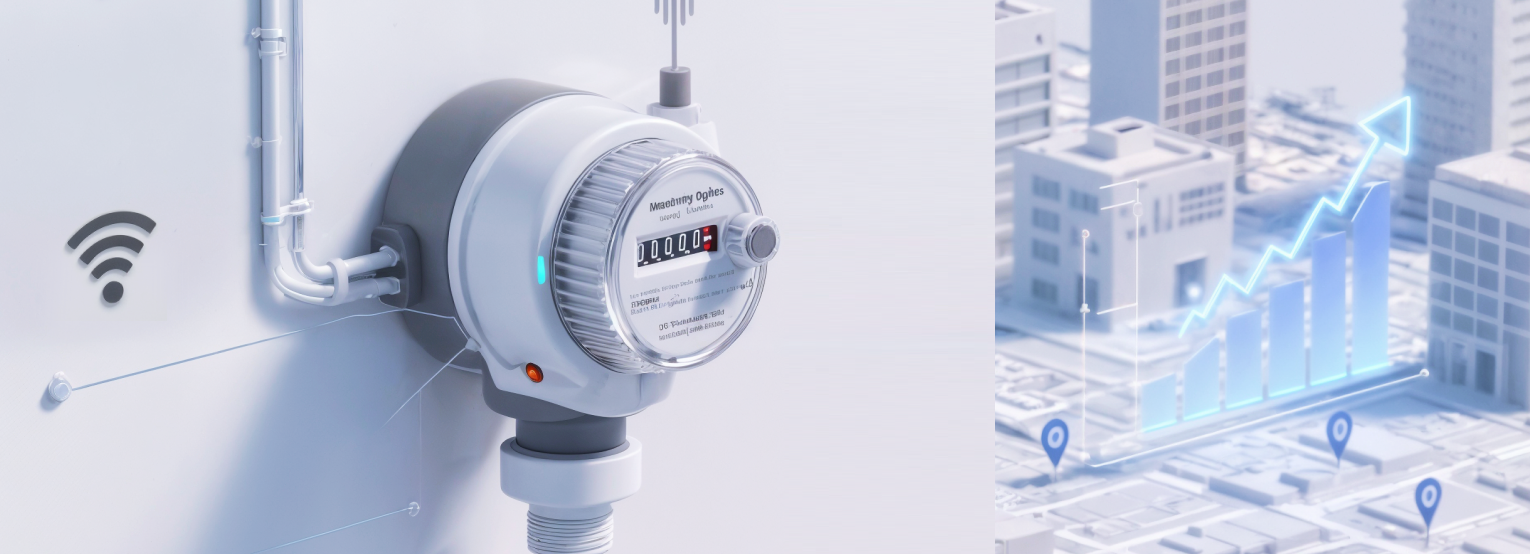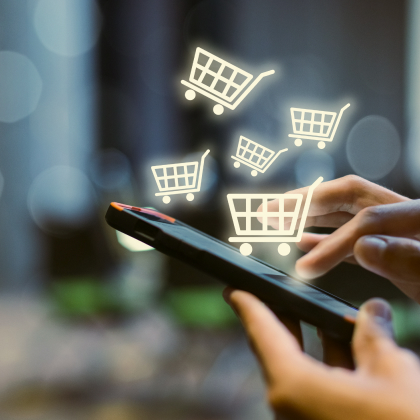Modern technologies are rapidly transforming the way utility infrastructure is managed. In the case of water and energy supply companies, the implementation of remote metering systems is no longer a question of “if”—the key consideration today is how effectively and efficiently it can be done.
To convince investors, municipalities, or housing cooperatives of the viability of such investments, it’s important not only to describe the technological benefits and digital transformation in utilities, but also to clearly calculate the return on investment (ROI). In this article, we focus on how to carry out a utility metering cost analysis and the investment justification for power utility smart metering.
What Does a Remote Metering Project Include?
Before diving into the financial calculations, it’s crucial to understand the structure of a remote metering project. Advanced metering infrastructure (AMI), isn’t just about “smart meters“—it’s a full ecosystem that includes measuring devices, radio modules, data transmission systems (LPWAN, GSM, NB-IoT), and software for data collection and processing.
Depending on the objectives, scale, and automation level, the cost of implementation can vary significantly. However, the core goal of any smart grid financial planning remains the same: making long-term savings in utility metering by reducing operational costs and improving resource consumption control.
Water and energy companies traditionally face a number of problems: inaccurate billing, network losses, late payments, and high costs associated with manual data collection. Implementing remote metering systems can eliminate most of these issues, but in order to justify the investment, it’s essential to understand how exactly this will impact the financial outcome.
What ROI in This Context Consists Of
ROI is a metric that indicates how effectively invested funds generate returns. For a remote metering project, ROI can be calculated using the formula: ROI = (savings + additional revenue – expenses) / expenses × 100%
It’s important here to account for all aspects: direct savings on manual operations, reduced losses, improved billing accuracy, lower accounts receivable, and also indirect effects—such as fewer emergencies due to faster response times or reduced infrastructure maintenance costs.
Expenses for utility infrastructure ROI include not only the equipment but also installation, integration, staff training, and system support.
A solid AMI system ROI calculation is built on an analysis of the current state i.e. how much manual data collection costs today, the level of resource losses, and the amount of overdue payments. The more detailed the data, the more accurate the forecast will be. However, even with rough estimates, implementation typically shows a payback period of 2 to 5 years.
Direct Financial Benefits: Where You Save
One of the most obvious sources of savings is the elimination of manual meter reading. In large residential areas or industrial zones, the costs of logistics and personnel can be substantial. Once automated, these costs are virtually eliminated. Moreover, data is transmitted in near real-time, allowing optimization of other processes—from billing to load forecasting.
Another key factor in any remote metering business case is loss reduction. Smart meters accurately record consumption volumes and transmit the data centrally, without human involvement. This allows quicker identification of discrepancies, leaks, or tampering attempts. For water utilities in particular, where network losses can exceed 30%, reducing them even by one-third leads to significant savings.
ROI is a metric that indicates how effectively invested funds generate returns. For a remote metering project, ROI can be calculated using the formula: ROI = (savings + additional revenue – expenses) / expenses × 100%
It’s important here to account for all aspects: direct savings on manual operations, reduced losses, improved billing accuracy, lower accounts receivable, and also indirect effects—such as fewer emergencies due to faster response times or reduced infrastructure maintenance costs.
Expenses for utility infrastructure ROI include not only the equipment but also installation, integration, staff training, and system support.
A solid AMI system ROI calculation is built on an analysis of the current state i.e. how much manual data collection costs today, the level of resource losses, and the amount of overdue payments. The more detailed the data, the more accurate the forecast will be. However, even with rough estimates, implementation typically shows a payback period of 2 to 5 years.
Indirect Benefits: Process Acceleration and Risk Mitigation
Beyond direct cost savings, remote metering enables improved resource management.
Centralized data collection allows for consumption analysis by zone, demand forecasting, anomaly detection, and fast response. This reduces the workload on maintenance teams, improves service quality, and lowers the number of customer complaints.
A further crucial advantage is enhanced transparency in billing, especially when working with end users. When consumers have access to their own usage data, trust in the utility provider increases, and the motivation to pay on time strengthens. This helps to reduce overdue payments, improving the company’s cash flow.
There’s also the reputational benefit to consider. Municipalities that invest in digital transformation demonstrate a commitment to modern approaches and sustainable development. This matters to residents and is also beneficial when dealing with regional authorities and grant providers.
How to Approach the ROI Calculation for Your Project
Every project is unique, and there’s no universal ROI template. However, several key steps can help you build a sound financial model.
To establish your remote utility metering ROI, first assess your current operations: how many meter readers are employed, how often is data collected, what are the levels of losses and non-payments. Second, gather data on equipment, installation, and system maintenance costs. Then, you can begin modeling—comparing projected 5-year costs and savings before and after implementation.
Be sure not to overlook operational details, such as who will maintain the system, how often meters need replacement, whether backup power or vandal protection is required. All these factors influence the final smart meter deployment cost, and the economic benefits of smart metering.
A quality technology provider can assist with a sample estimate and financial plan. In this respect, partnership with a reliable vendor is key to the project’s success.
Implementing remote metering isn’t just a step toward digitalization—it’s an investment with a measurable financial return. For water utilities, energy companies, developers, and housing cooperatives, it offers a way to cut costs, provide a revenue increase from accurate billing, and improve process control.
Most importantly, remote metering lays the groundwork for a sustainable and transparent resource management system. A properly calculated metering infrastructure upgrade ROI will help justify the investment to all stakeholders and establish a strong foundation for a digital future.
 1424
1424




